Ready Player One
Media players drive the digital signage experience. Which one is best for your installation?
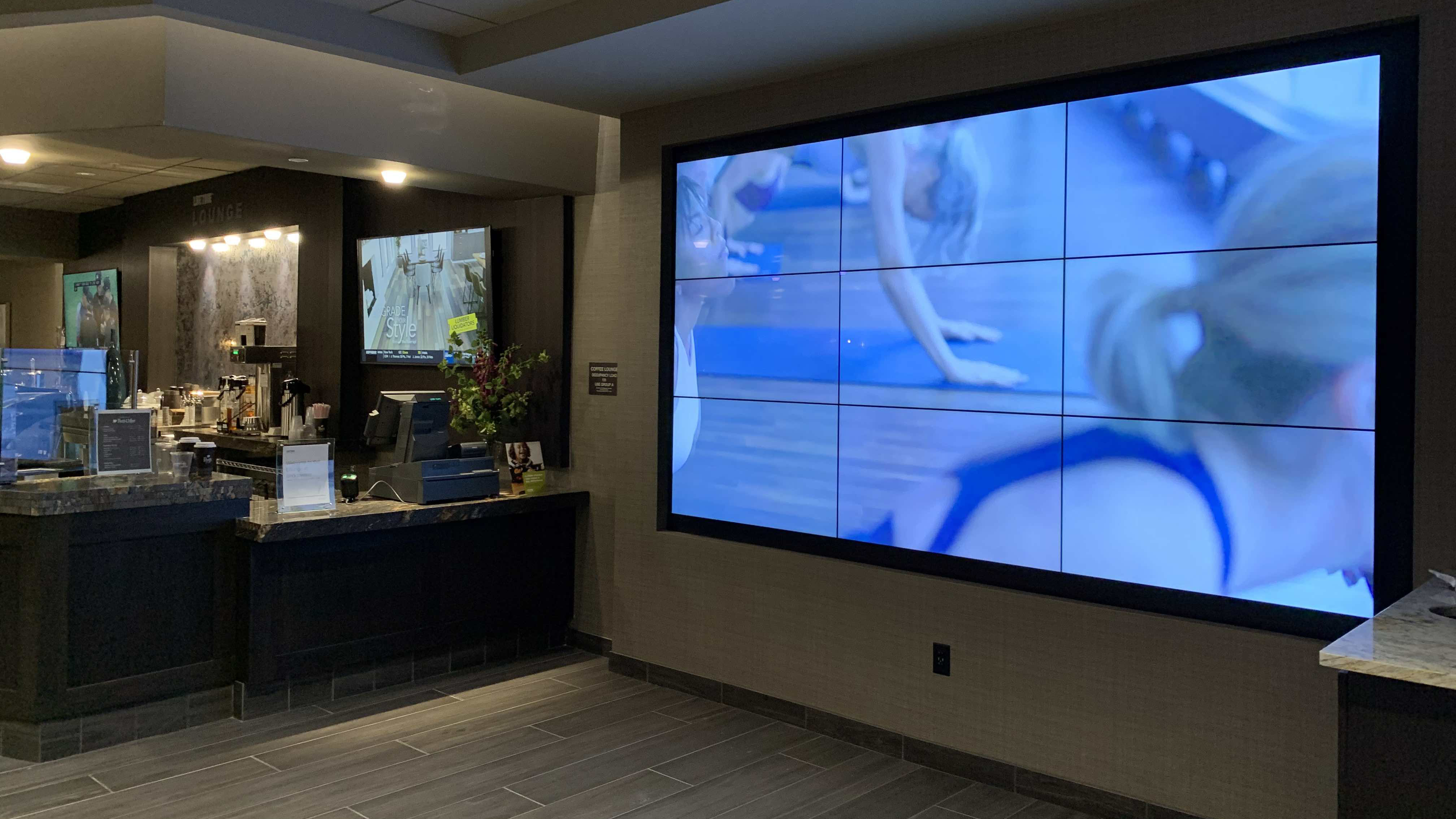
Immersive. Interactive. Intuitive. These are the buzzwords in today’s world of digital signage and massive displays. And they aren't limited to Times Square or sports stadiums—even a grocery store or doctor's office may be decked out in bright new displays.
That’s why having the right media player behind it all is more important than ever.
Landscape or Portrait?
Resolution and orientation are two important considerations for a digital signage install, and those decisions will impact your media player choice. “While the norm has been Full HD for many years, we’ve finally seen large-scale adoption of 4K,” said Joe Murray, technical operations manager and lead systems engineer at Visix. “The extra resolution has provided clients with the opportunity to showcase high-fidelity images and videos across their organization.”

“Any media player on the market today will accomplish a modest application of 720p video at 30 frames per second,” explained Jordan Feil, director of marketing, Navori Labs. “The story changes as the resolution escalates. What content will your organization publish today, and where does the roadmap lead a year or two in the future? These are some of the essential decisions when choosing the size of the media player and how much power it will consume.”
[Meet the Media Players Behind These SciFi, Fantasy, and Horror Immersive Experiences]
While 4K dominates the current Pro AV landscape, picking the right signage orientation is a bit trickier. “Depending on the application, both [landscape and portrait] orientations are useful,” said Ernie Wohlleben, president of New York-based custom integrator Architechnology Designs. “Signage is often presented differently than video entertainment content.”
“Digital signage end users today do not want limitations,” Feil added. “They want flexibility, which means that media players need to support both orientations. The average end user will use a 75:25 ratio of landscape to portrait.”
A daily selection of the top stories for AV integrators, resellers and consultants. Sign up below.
The lesson learned here is that suppliers, their partners, and end users should experiment with different operating systems and hardware configurations and find solutions that check all the boxes.
Jordan Feil, Navori Labs
Speaking of flexibility, how many displays a media player can support, much like the preferred orientation, is often a case-by-case basis. “While some of our lower-end players support a single display, our higher-end players can support up to 12 displays natively,” Murray said. “Some of our clients even combine our high-end players with video processors to power even more displays than that.”
“Attempting to process video on a 32-screen video wall with a low-power media device will result in failure,” Feil noted. “We recommend media players that can reliably power eight screens at once. Ultimately, it’s about how powerful the device is and how much the end user can spend.”
Get Connected
What about getting the content up and running? There are several ways to get customized content to the media player.
“The days of the tech manager walking from screen to screen with USB sticks and keys to manually transfer files are over,” Feil said. “All professional media players today receive their content via the internet, whether using Wi-Fi or a wired LAN connection. A stable and reliable internet connection is required to ensure that content reaches the device. Content is customized before it is downloaded, which is why end users need a flexible and feature-rich CMS that is easy to use.”
“We offer players that support Ethernet or both Ethernet and Wi-Fi,” Murray said. “HDMI is still the reigning champ for display connectivity, although we’ve seen an uptick in the utilization of DisplayPort. Since most clients are familiar with HDMI, that tends to be the de facto choice.”
“HDMI remains the standard for audio and video,” Wohlleben agreed. “While wireless options do exist, hardwiring for data is the best practice.”
When it comes to installation, an integrator will need to consider several physical factors as well as the best options to mount the player. “If you plan on mounting a player directly behind a display, be sure to account for networking,” Murray offered. “If a player doesn’t have built-in Wi-Fi capabilities, you may need a network drop behind the display, so the player can connect to your local network and/or the Internet. Additionally, if the player contains an external power supply, be sure there’s room to mount it behind the display.”
“Ideally, they live in the headend, but can easily be tucked behind a display as needed,” Wohlleben added.
That doesn’t mean even the most experienced in the field don’t face challenges. “Navori Labs recently worked with an end user to source about 200 individual media players that were specified for Windows,” recalled Feil. “Licensing costs were higher than the customer preferred, so we pivoted to Android-based players. The lesson learned here is that suppliers, their partners, and end users should experiment with different operating systems and hardware configurations and find solutions that check all the boxes.”
What's the right media player for your install? It depends on what you need today and what you may want tomorrow. Choosing the right media player for your application can be a challenge, but here are some media players from a range of manufactures to consider.
BrightSign HD5

The new 4K BrightSign HD5 is an affordable, versatile player offering the features and functionality needed for a broad range of digital signage projects. The standard model has Gigabit Ethernet, GPIO, and optional Wi-Fi and IR ports, while the extended I/O version adds USB and serial ports for added interactive functionality. The player is cased in a thin aluminum enclosure that dissipates heat, eliminating the need for a fan and helping the player operate silently.
MuxLab Android DigiSign
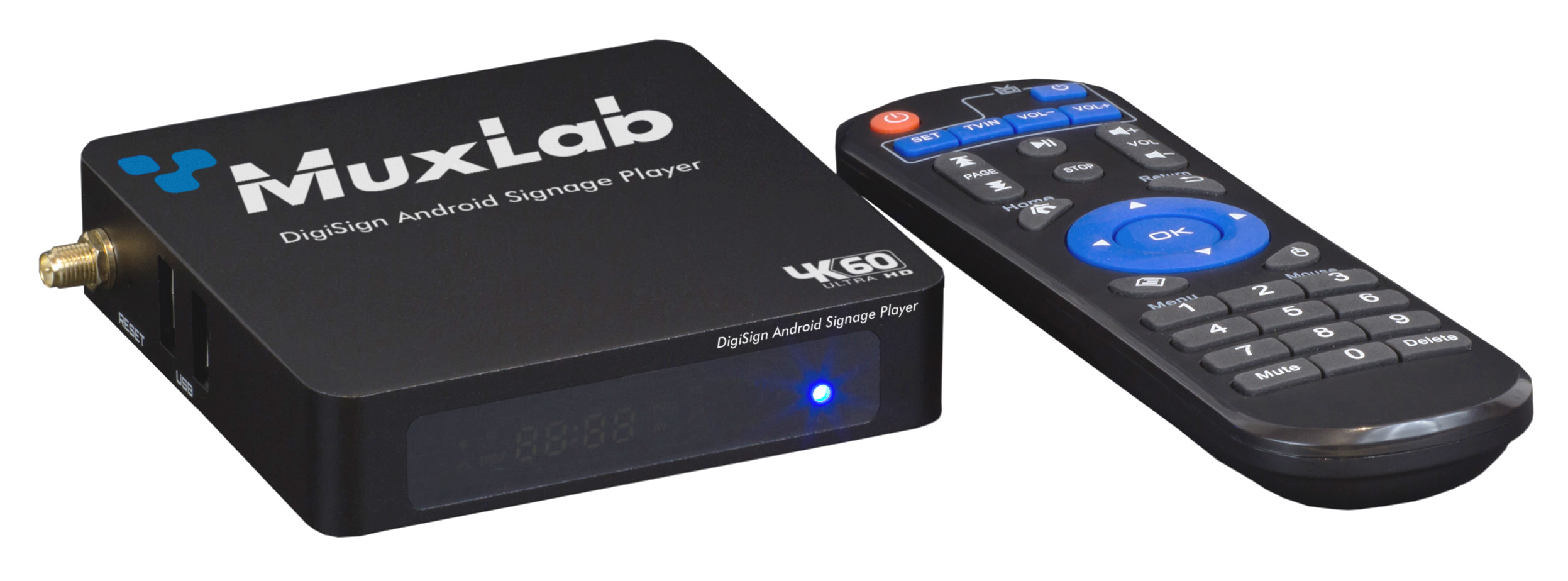
Android DigiSign, which supports a wide variety of video formats and codecs, works with MuxLab’s DigiSign CMS software. The CMS makes the loading and management of content playing on MuxLab's Android DigiSign media player (model 500799) streamlined and intuitive. The player supports up to 4K@60Hz (4:4:4) video streams, and offers two HDMI output ports to connect to two displays. Supported playlists and yearly scheduler functionalities simplify use. The player offers a wide range of features including multi-format video, image, and audio files, HTML5, widgets, and RSS feeds with the use of the DigiSign CMS.
Navori STIX 3700
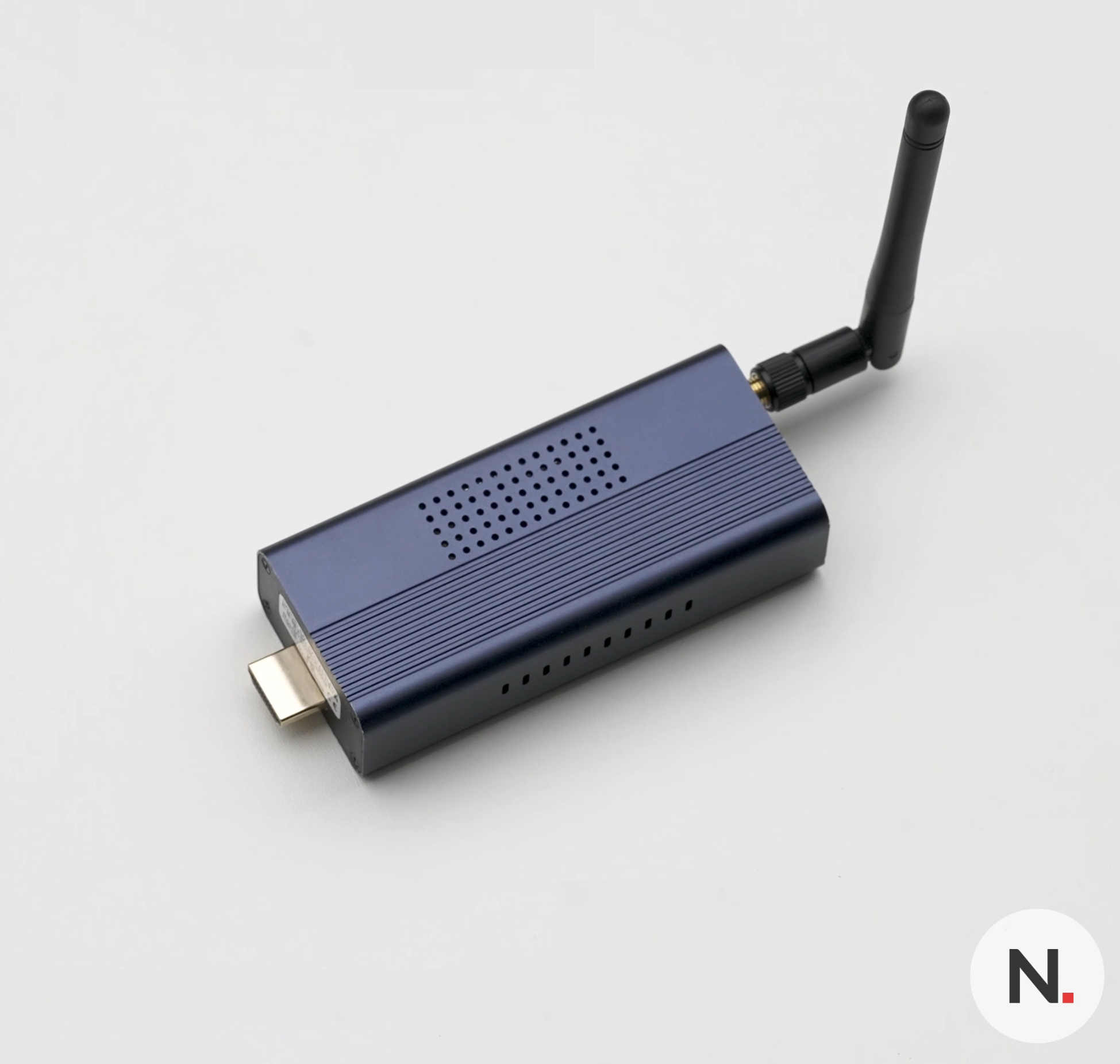
StiX 3700 is a 4K Android media player, designed for reliable 24/7/365 digital signage use. The small form factor allows it to be easily hidden behind any display. It features sophisticated template rendering and seamless media transitions across all displays and screens, making for a fully plug-and-play experience for any type of screen. Navori provides total support for every screen size and orientation with easy maintenance.
Seneca Element
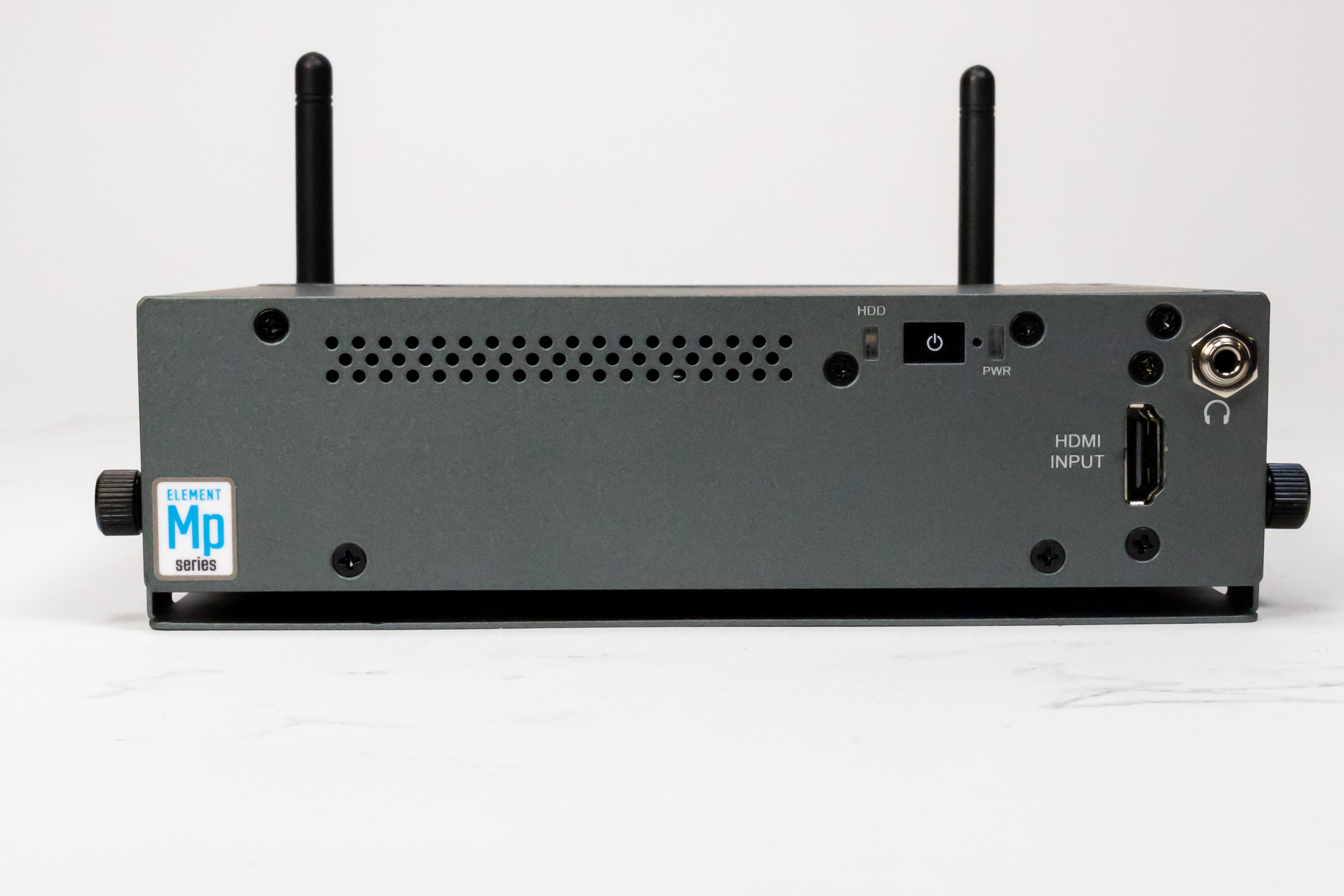
Seneca’s new version of the Element media player is powered by the AMD Ryzen processor, delivering more computing power options with devices that deliver high-quality performance in digital signage and IoT environments. The AMD processor provides integrators and end users with the Extended Display Identification (EDID) function, enabling the transmission of native resolution from the display to the media players. The Element media player comes in a compact form factor designed for easy integration behind displays, while simultaneously driving up to four combined displays. The system operates on Windows 10 IoT.
SpinetiX HMP400
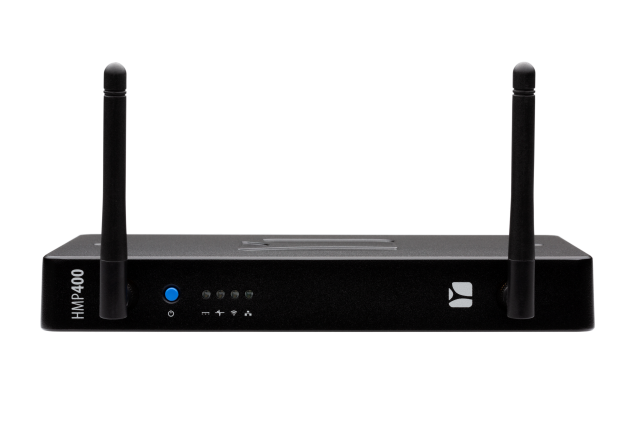
The SpinetiX HMP400 is the latest generation of SpinetiX HMP players. Designed for any digital signage scenario, its commercial grade, fanless design enables the player to be used in the most demanding environments. The HMP400 comes with DSOS, the purpose-built operating system designed and developed by SpinetiX, and an Intel Atom processor. The player supports 4K/60 fps streams, allows for long-lasting 24/7 use, and is PoE+ capable (with a Wi-Fi version available).
Videotel Digital's VP92
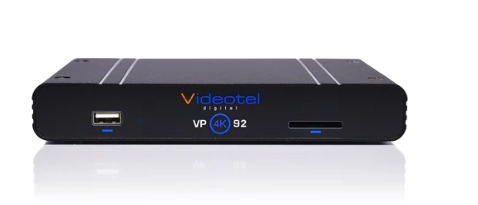
The new VP92 is a 4K/1080p industrial-grade digital signage media player that is network and Wi-Fi capable. Access content remotely with a free cloud software or play content locally with a USB or SD card. The VP92 comes with StudioPro or StudioWeb, which allows end users to design their screen with creative components.
ViewSonic NMP599-W
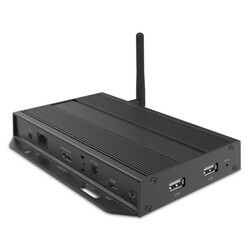
The ViewSonic NMP599-W is a high-performance, 4K Ultra HD media player that can be integrated with smart technologies such as sensors, cameras, modules, and readers. Advanced signage features include AlwaysOn AppLock to present unauthorized access and StrongCache for continued playback even when a network is not available. It supports touch for interactive wayfinding or self-service kiosk applications, while providing 4K video playback and access to content from the cloud. The NMP599-W features a powerful quad-core processor and runs on an Android 7.1 operating system. Connectivity includes Gigabit ethernet, 802.11 b/g/n wireless, HDMI 2.0, Micro USB, USB 2.0, and 3.5mm audio-out.
Visix Element 4K
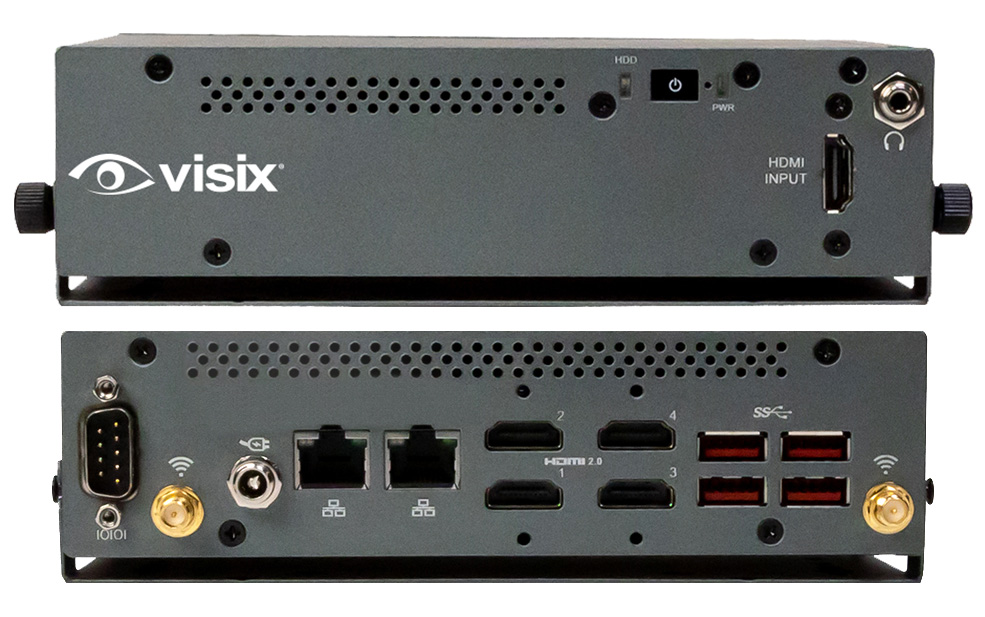
Visix brings content to life at resolutions up to 3840x2160. The compact unit supports both wired and wireless networking with external Wi-Fi antennas. These players are powered by Intel processors, with plenty of built-in memory (256GB SSD) and high-performance graphics cards and HDMI outputs. Landscape and portrait output are supported. As with all Visix media players, the Element 4K has built-in security, including Windows Firewall, to ensure data is protected at all times.
VITEC EP5+ End-Point

The VITEC EP5+ End-Point digital media player displays IPTV video content or digital signage on a single display or up to four multi-display videowalls. It enables decoding of two 4K IP streams or video files, simultaneously, for eye-catching signage or PiP views. Integrated with VITEC’s EZ TV Platform, the EP5+ is controlled and operated from a central management interface for the day-to-day administration of content, schedules, and user access rights. Designed with maximum video performance, lowest playback latency, and highest reliability in mind, the EP5+ features 100% hardware-based video decoding and solid-state components packaged in a rugged enclosure with no moving parts.

Wayne Cavadi is the senior content manager of Systems Contractor News. Prior to taking a leap into the Pro AV industry, Wayne was a journalist and content lead for Turner Sports, covering the NCAA, PGA, and Major and Minor League Baseball. His work has been featured in a variety of national publications including Bleacher Report, Lindy's Magazine, MLB.com and The Advocate. When not writing, he hosts the DII Nation Podcast, committed to furthering the stories and careers of NCAA Division II student-athletes. Follow his work on Twitter at @WayneCavadi_2 or the SCN mag Twitter page.
